Integrated Aural Skills 2019-20
Ear Training - Common Chord Progressions in Context
- Spotify playlist for today’s lecture: “UI Aural Skills III Chord Progressions” by user “mirandawilson”
I-IV-V-I - The Basis of Western Harmony
I-IV-V-I is the commonest chord progression in Western diatonic harmony. Its variant, I-ii6-V-I, has the same function.
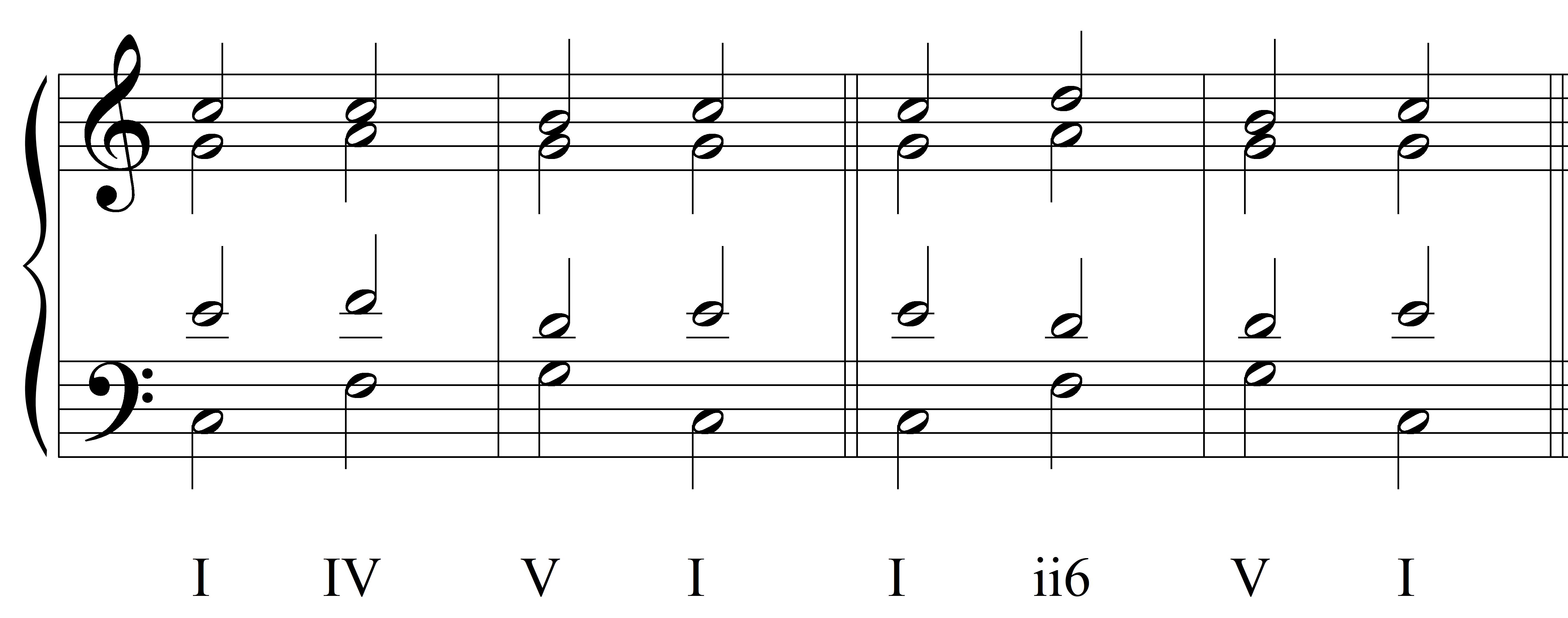
ii-V-I - A Jazz Standard Progression
Chord ii often precedes the dominant. Google the lead sheet for Coltrane’s “Giant Steps” for a memorable example of the repeated use of the ii-V-I progression.
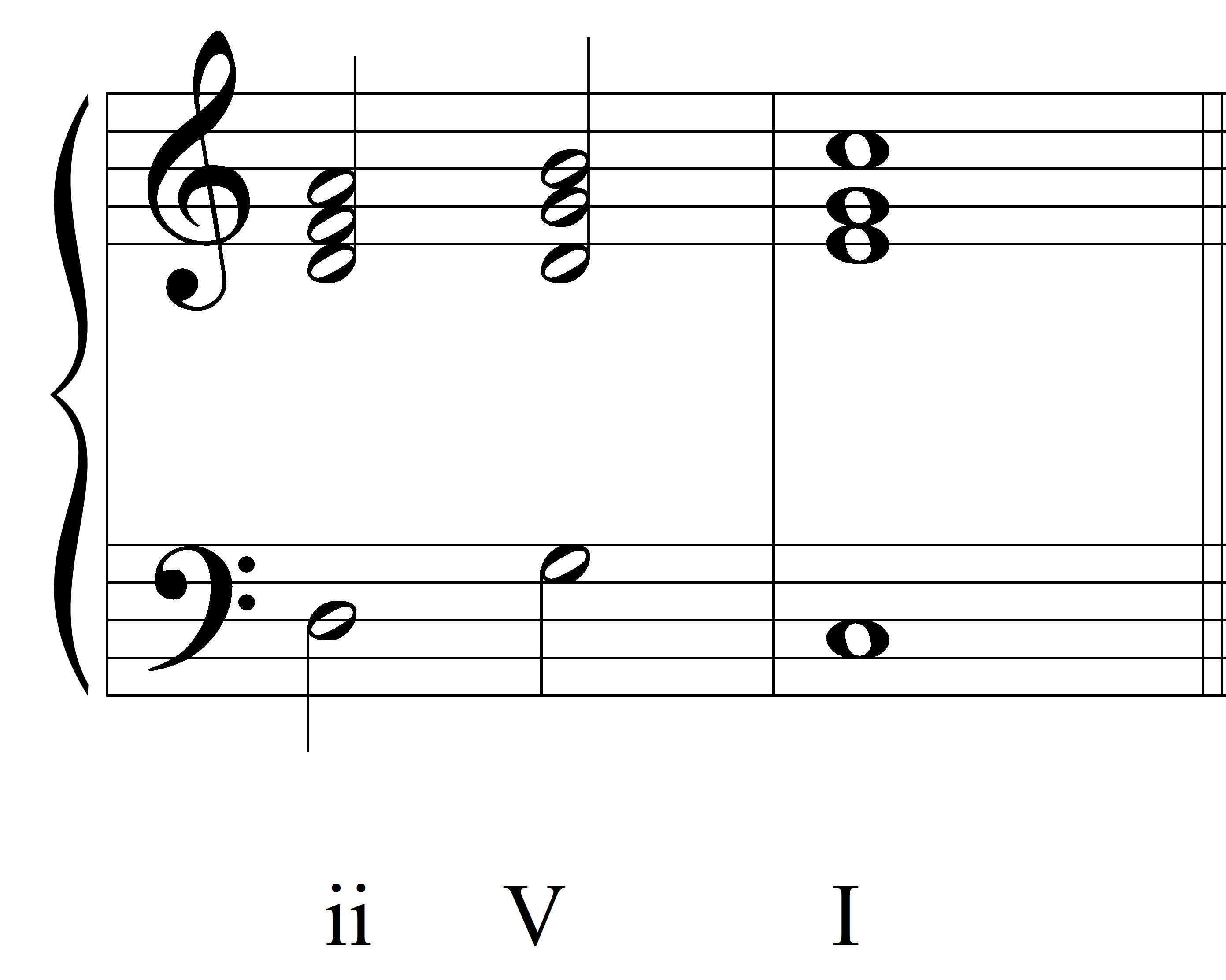
I-vi-IV-V - The “Doo-Wop” Progression
This chord progression is common in motown and other popular styles of the mid-twentieth century. Listen to Frank Loesser/Hoagy Carmichael, “Heart and Soul,” or Fred Parris, “In the Still of the Night.”
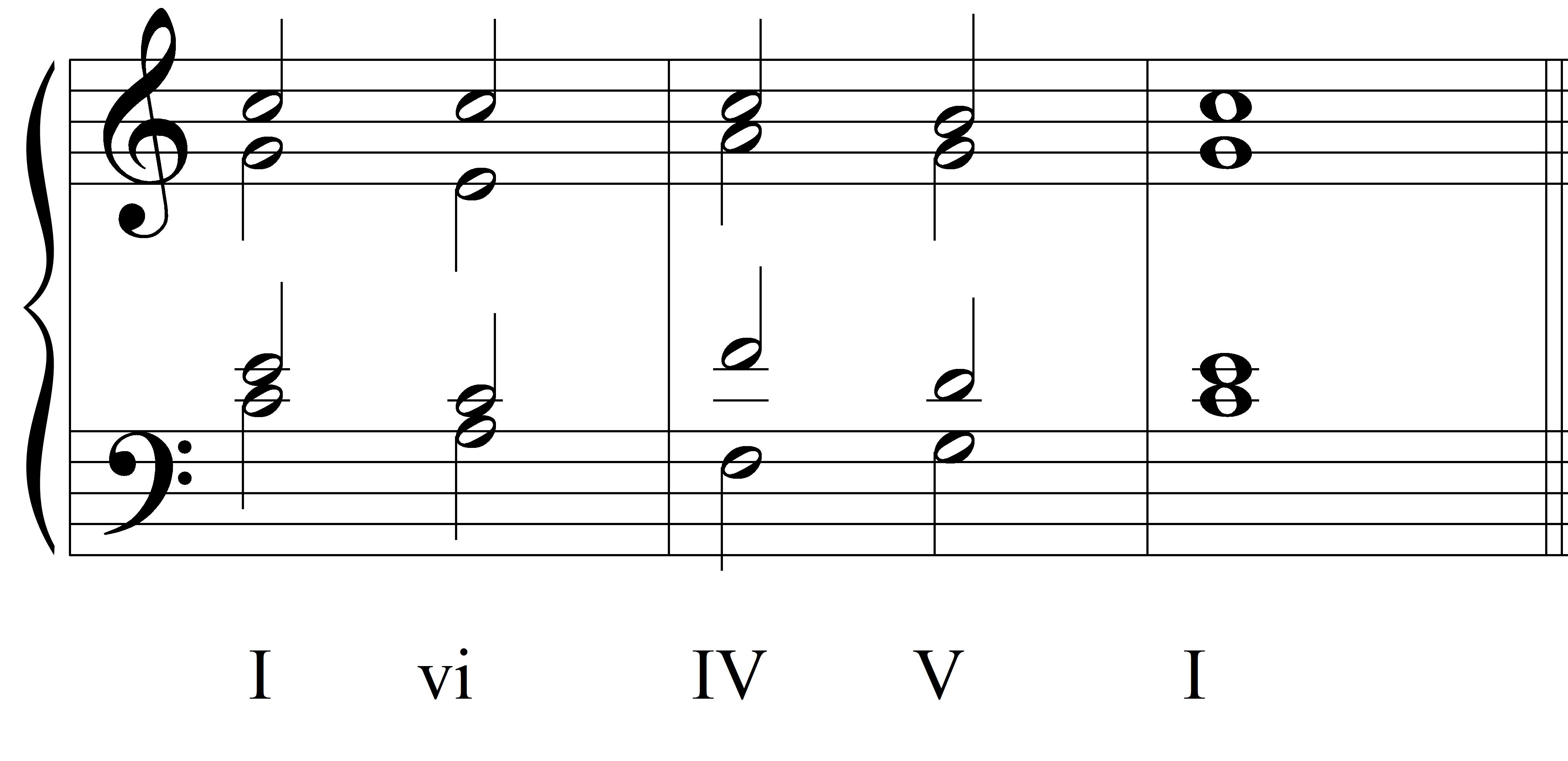
i-♭VII-♭VI-V - The Andalusian Progression
This progression is characteristic in flamenco guitar music. The bassline, “do, te, le, sol,” was commonly played as an ostinato for improvisation in the Baroque era. Listen to Claudio Monteverdi, “Amor” from Lamento della ninfa, for an example of this progression. For a more modern take on the Andalusian progression, listen to Michael Jackson, “Smooth Criminal.”

I-V-vi-IV - The Pop Song Progression
This progression is extremely common in modern pop music. Listen to “Can You Feel the Love Tonight?” from The Lion King, or “Paparazzi” by Lady Gaga.
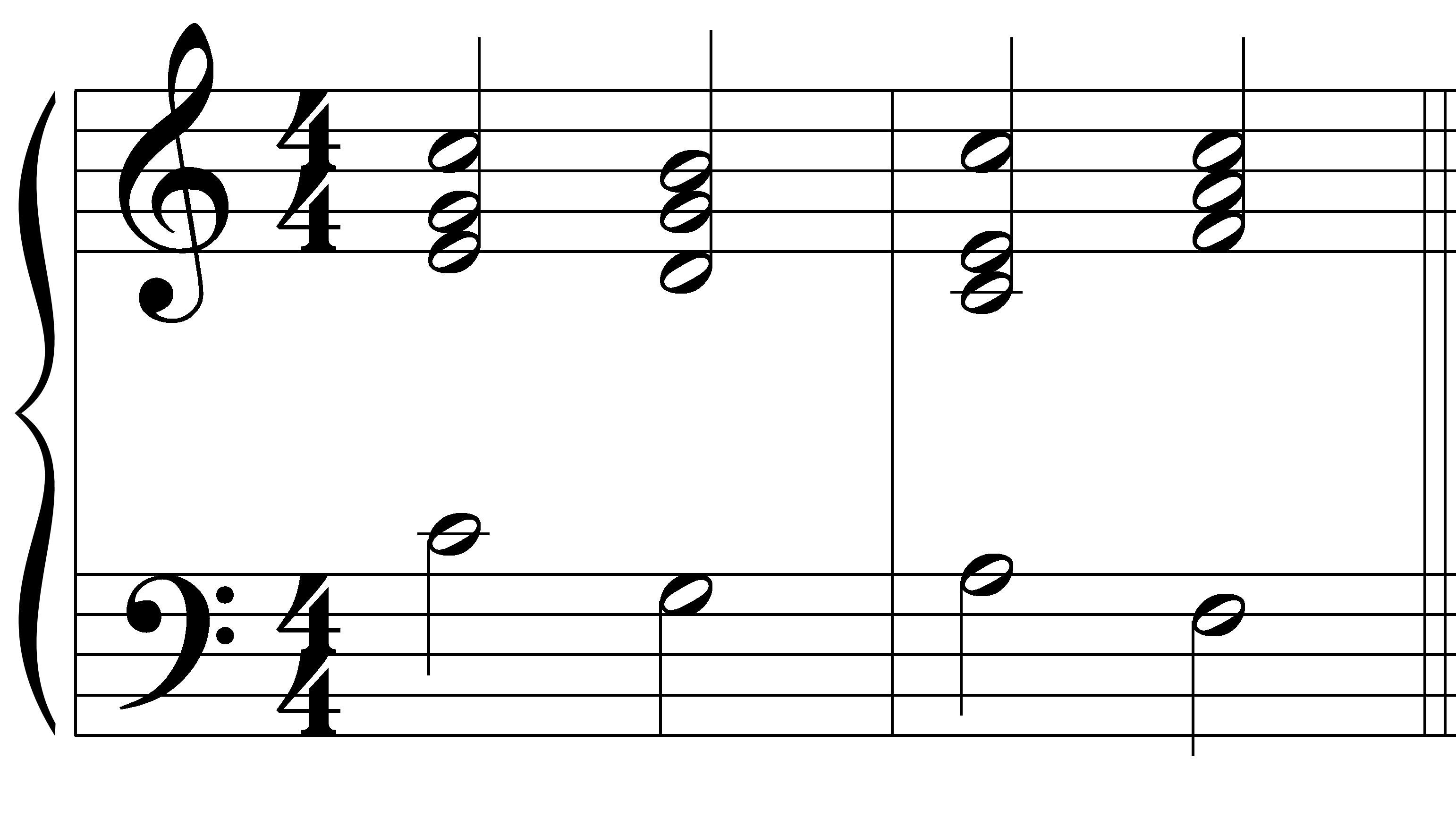
I-V-vi-iii-IV-I-IV-V - The Pachelbel Progression
A variant of the pop song progression can be found in the Baroque-era equivalent of a pop song, Johann Pachelbel’s famous Canon. (Please note that while this piece is very influential in the history of music analysis, chord iii will only appear rarely in the progressions we will study in this class, for reasons of voice-leading.)
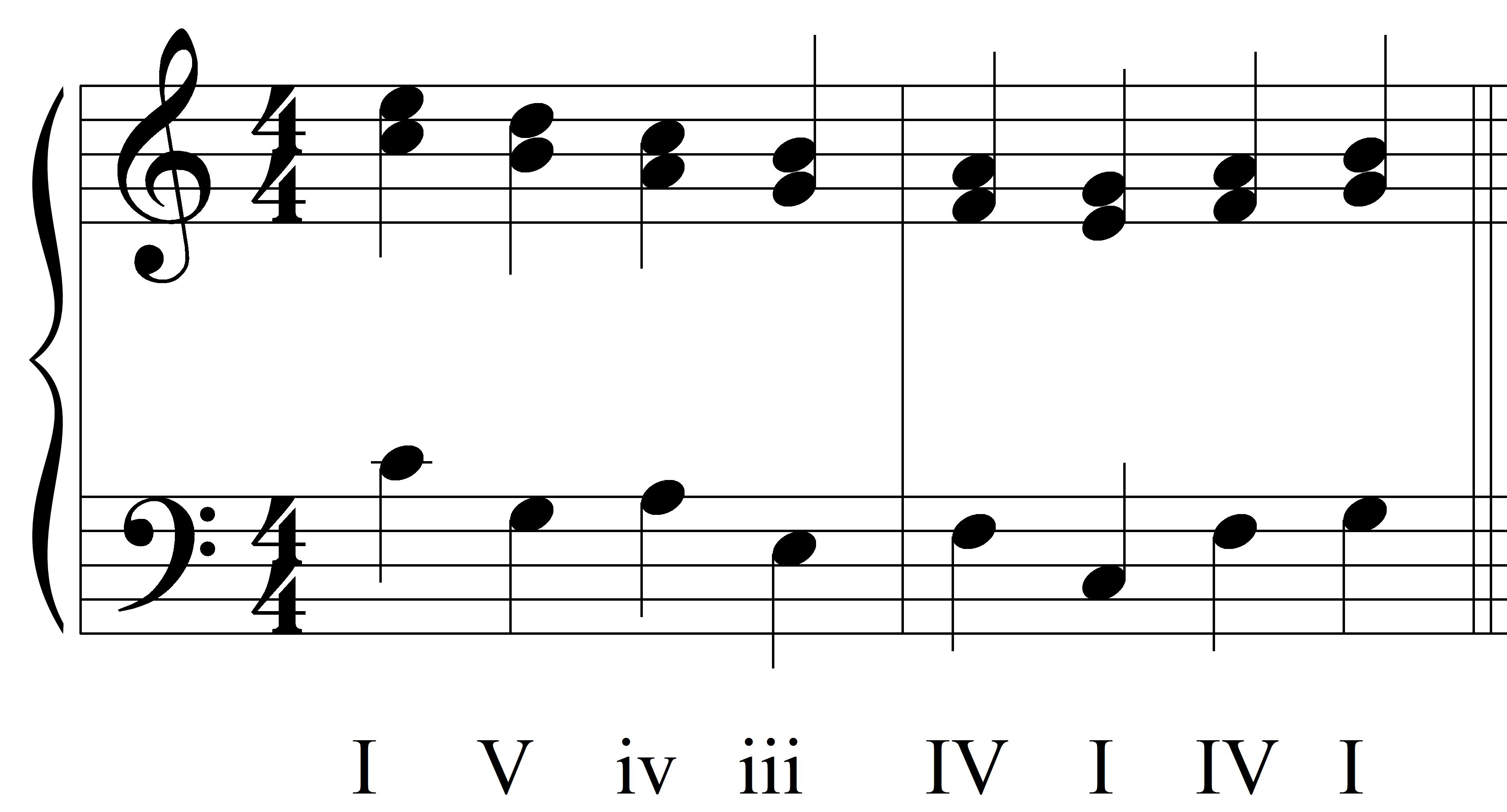
Things to take away from this:
The chord progressions covered in today’s class—including the order in which the chords appear, and the cadences at the ends of phrases—occur again and again in music from the 1600s through the pop songs of today. If you commit these progressions to memory through studying the examples in this handout, and making your own analyses of popular and classical music, you will find Aural Skills III chords, melodic dictation, and harmonic dictation much easier. And you will also increase your own understanding and appreciation of how music works.